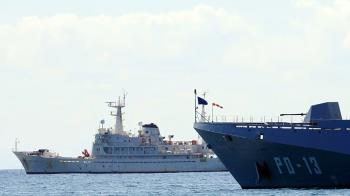Alwaght- During the past five centuries, the Iranian-Russian relations stood as the most unique bilateral ties in the course of history of diplomatic and strategic developments. The reason for that derives from the very long and relatively recorded history of the relationships between the two countries which consist of a complex of conflicts and friendships and constructive cooperation. Iran and Russia have almost experienced every dimension that two countries could experience in their record of diplomatic relations. From fighting sovereignty wars and entering strategic alliances against each other to having peaceful neighborhood relations and strategic collaborations, all are found in the long-standing historical record of the Russian-Iranian ties.
Meanwhile, the two countries have made great efforts in recent years to improve their bilateral ties, as the recent visit of Vladimir Putin, the Russian President, to Tehran and meeting Iran’s supreme leader Ayatollah Sayyed Ali Khamenei is considered as one of the important junctures in Tehran-Moscow diplomatic relations. The two nations have signed seven memorandums of understanding (MOU) on the sidelines of the Gas Exporting Countries Forum’s (GECF) summit, held in Tehran on November 23, 2015, which seem to have the potentials to play an influential role in enhancing the cooperation and commercial exchanges between Iran and Russia. Currently, raising the volume of the trade ties is high on the agenda of the negotiations taking place between the two countries. Growing only %1.5 compared to 2013, the 2014 Tehran-Moscow trade volume has reached $1.680 billion, which is a very small number. Therefore, the two countries are intending to make a list of their necessary goods and use their national currencies in their financial transactions. Also, the Iranian and Russian officials eye signing contracts for importing Russian industrial commodities to Iran worth $21 billion, as, additionally, Moscow seeks opening a $5 billion credit line for Iran. Accordingly, the two sides are hopeful to upgrade their trade exchanges’ volume, making it jump up from the current $1.680 billion to $10 billion in the future.
President Putin’s visit to Tehran was also significant in terms of politics and security. Because, being the allies of the Syrian President Bashar al-Assad, Russia and Iran since the beginning of conflict in Syria have stood in the face of countries like the US, Saudi Arabia, and Qatar. Undoubtedly, the Moscow’s back-up for Tehran in Syria is a keystone in proceeding with the anti-terror campaign in West Asia region and in shaping Syria’s political future. On the other hand, the Russian policies in the region and in Syria are not adoptable and viable without an Iranian support. In fact, without Iran’s backing, the Russian influence in West Asia and in Syria would be to a great extent enfeebled.
Thereby, the two countries are in need of boosting the bilateral ties, and this motive could stir improving their ties to higher levels. What makes such an approach more strengthened are the two countries’ common concerns about regional and global issues on the one hand, and on the other hand, the different fields of cooperation which by highlighting them, Tehran and Moscow could upgrade their relations.
The mentioned issues indicate that Russia-Iran relations are experiencing a new stage following Vladimir Putin’s recent visit to Tehran. Starting from Iran and Russia’s collaborations in Syria, the new stage is set to grow deeper as the process of delivering the Russian S300 air defense system to Iran goes into effect. Pointing to the Tehran-Moscow ties as unprecedented since Iran’s Shah Tahmasb I and Russia’s Ivan IV in 16th century, Ali Akbar Velayati, the senior adviser to Iran’s supreme leader, has said that “such a visit (by President Putin) with such a quality and two-hour timeframe and out of formality is unmatched in the history of the Islamic Republic of Iran, and it is indicative of the significance of the (Russia-Iran) ties.
With a regard to the will of the leaders of the two countries to develop strategic, comprehensive and long-term relations, it can be expected that in the future the two sides’ collaborations see a growth in bilateral, regional and international areas. Additionally, it is anticipated that Iran and Russia share ideas and consultations in a set of bilateral areas of cooperation including economy, trade, investment, nuclear energy and gas and oil extraction and production, as the technological-military cooperation, as well as important international issues like the Syrian crisis, implementation of JCPOA (Joint Comprehensive Plan of Action), and fighting terrorism would stay on the agenda of the Russian and Iranian political officials.

























